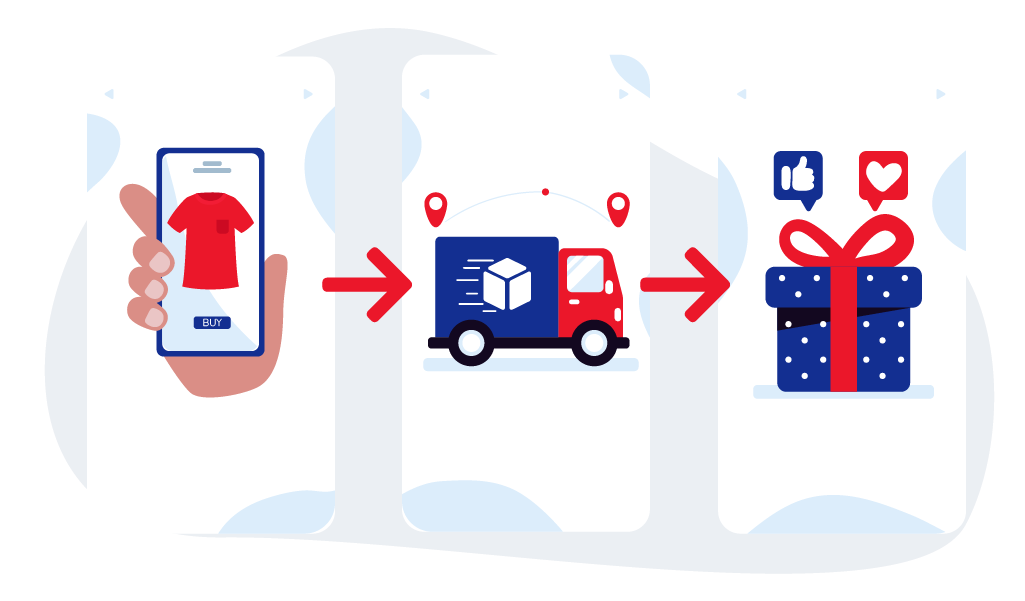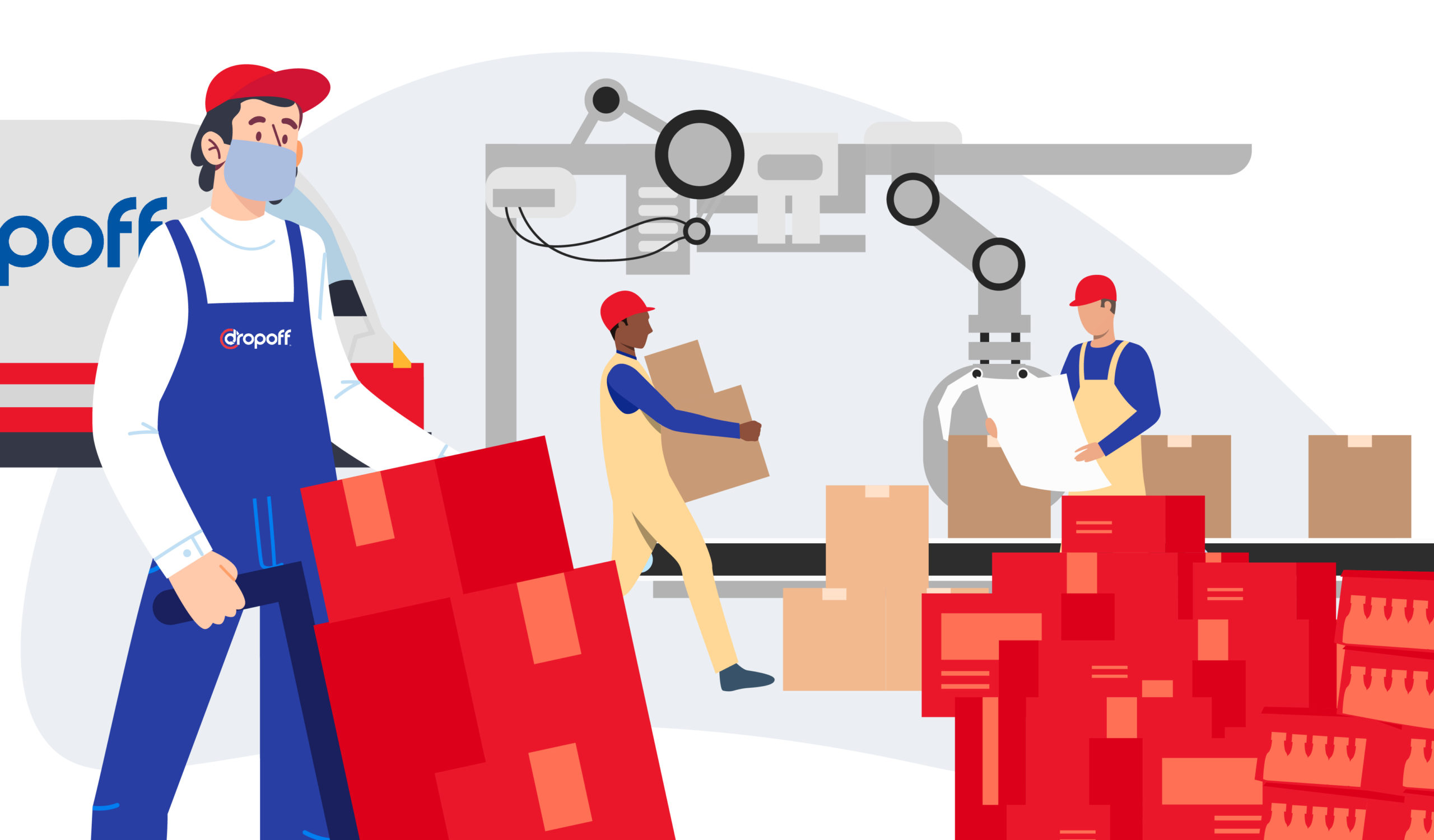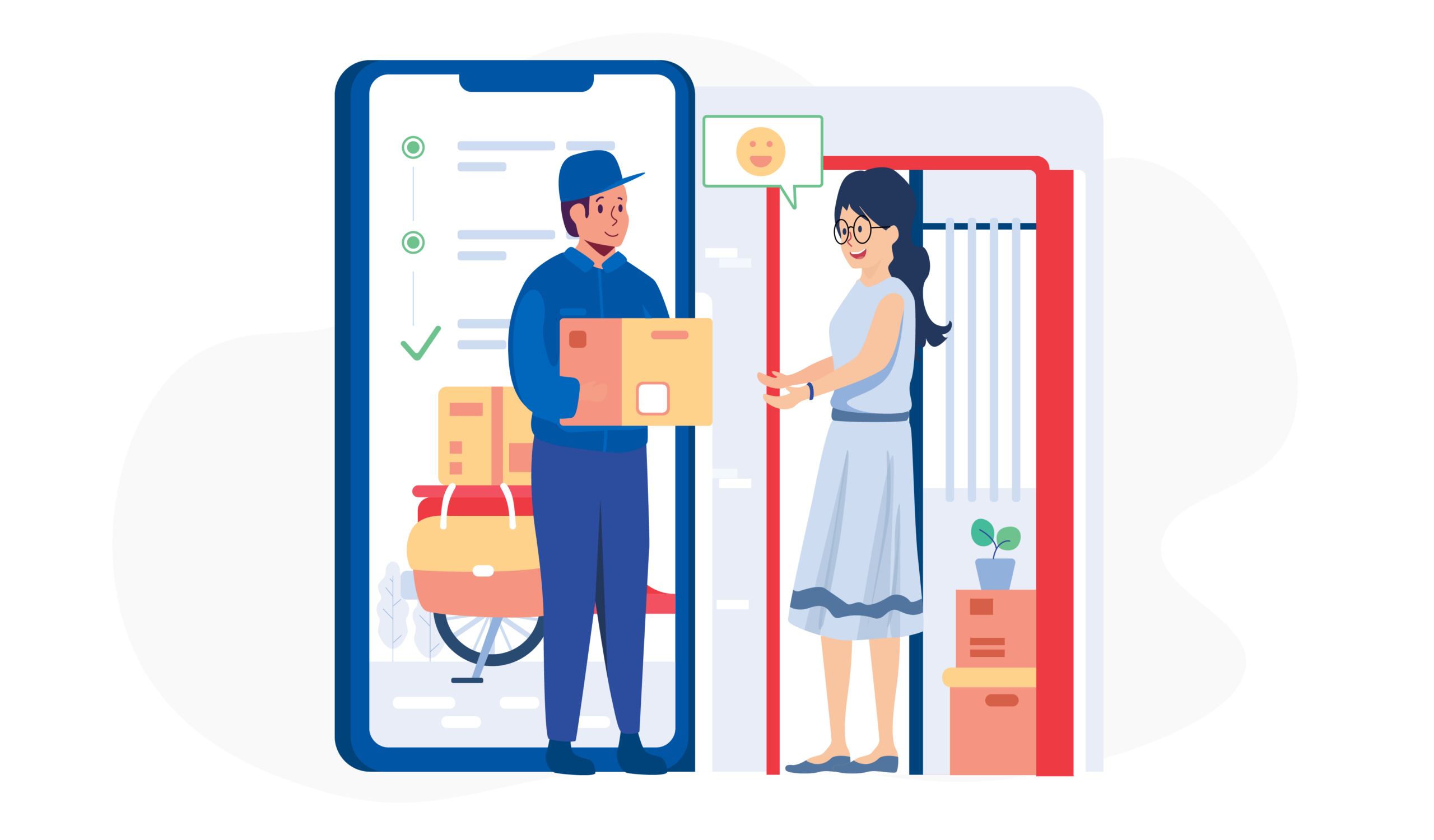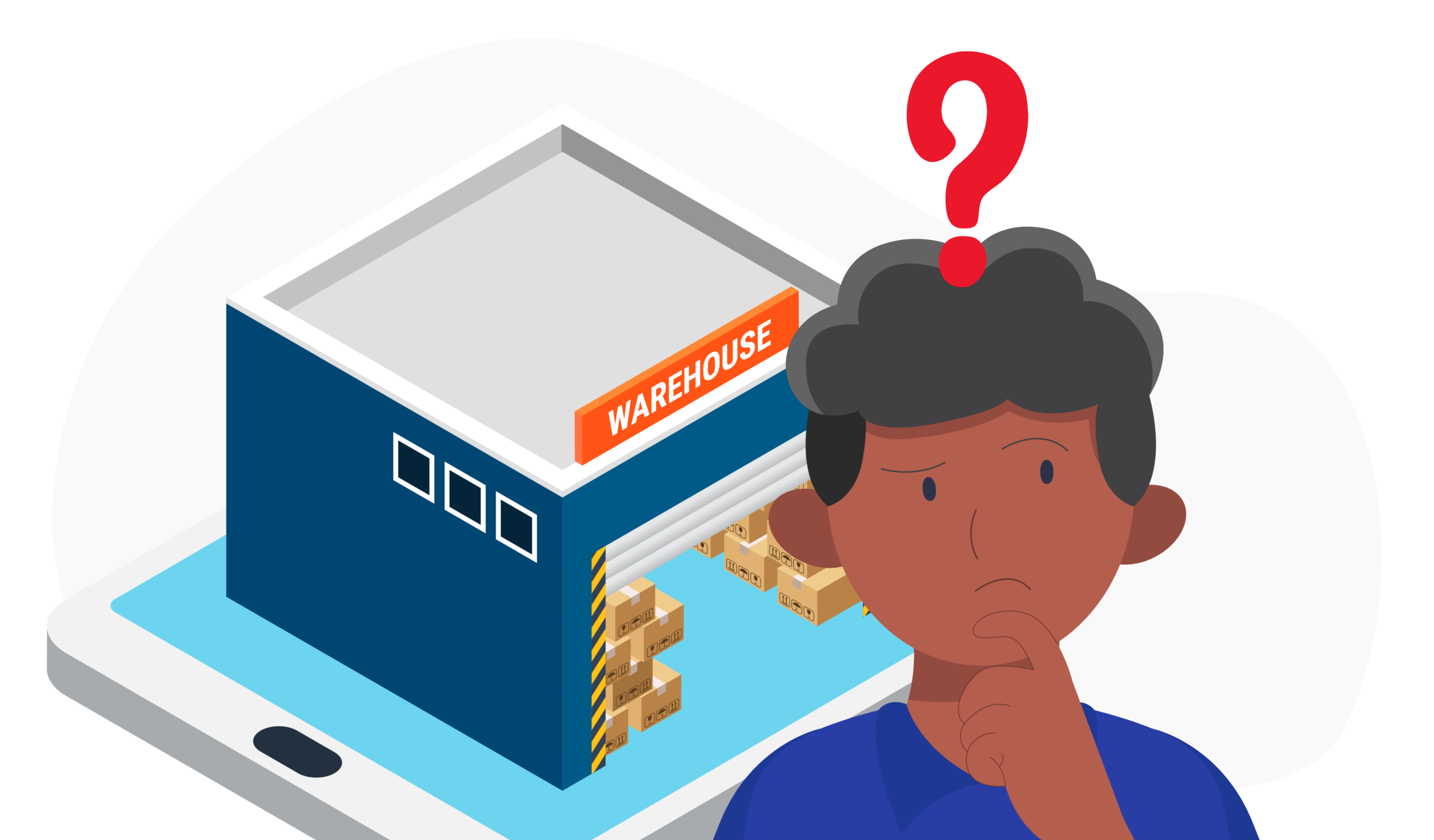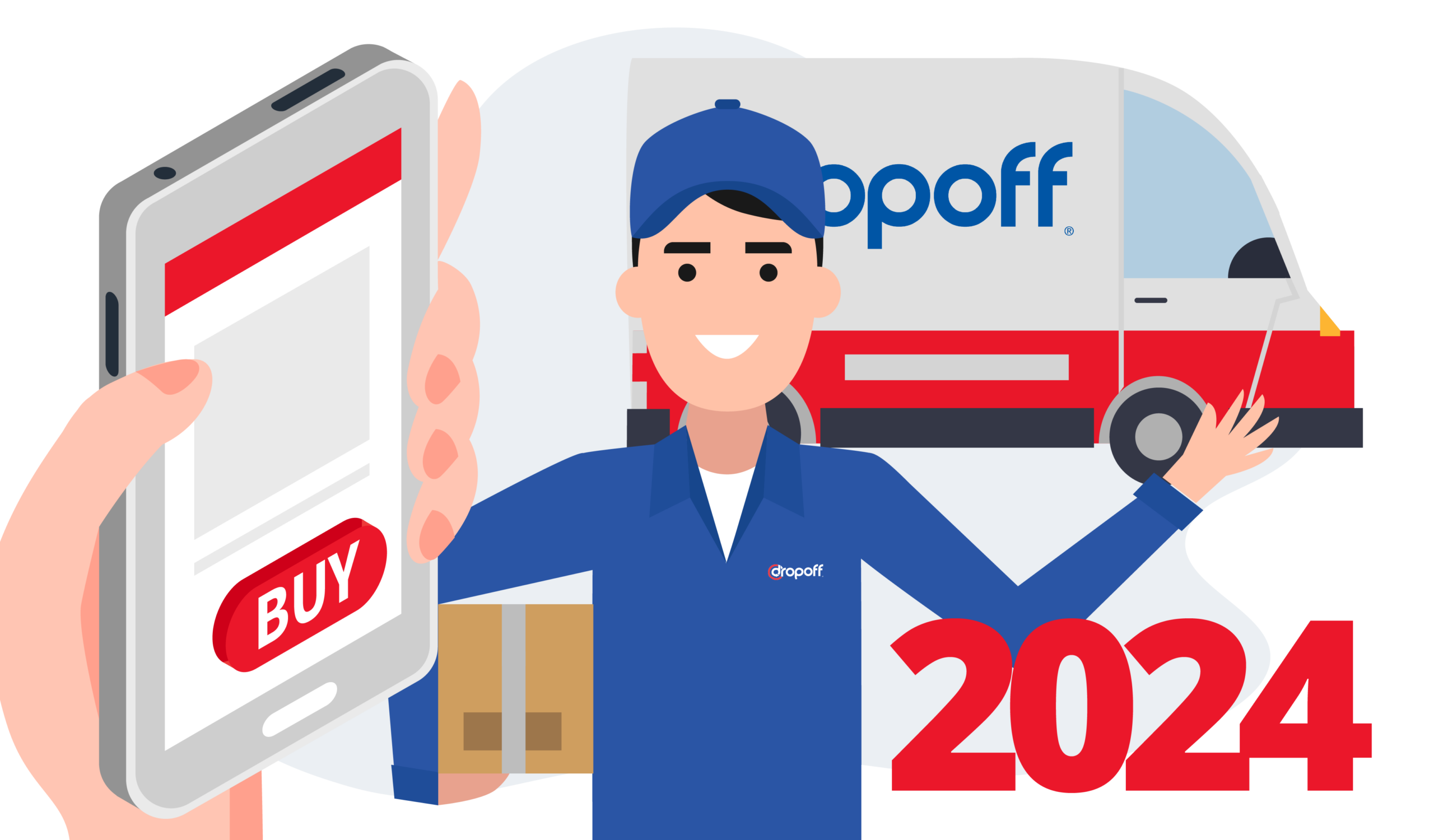Retail Replenishment: Strategies, Benefits, and Optimization Techniques
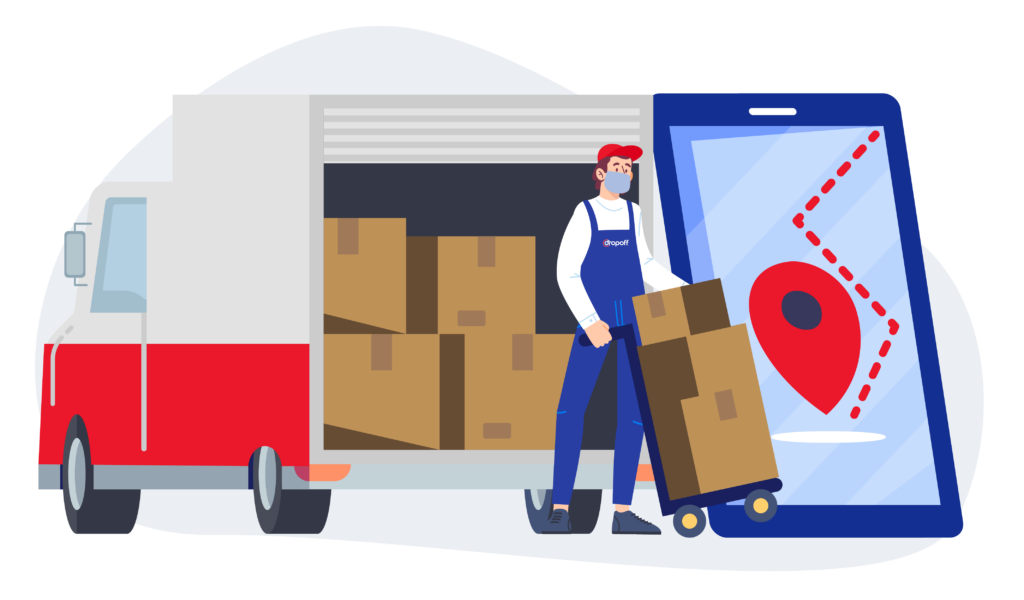
Retail replenishment restores a business’s inventory to maintain optimal stock levels based on the business’s needs. If you are a retail manager, inventory control specialist, supply chain coordinator, or business owner, you will want to read this. Retail replenishment ensures products are available to meet customers’ needs and demands without businesses having to deal with excessive overstock. This process runs operations smoothly and enhances customer satisfaction.
Our blog will explore strategies for maintaining replenishment, look ahead at future trends, and explain how Dropoff helps businesses with potential challenges. Our same-day delivery, scheduled logistics, and last-mile fulfillment solutions can help companies stay on top of their replenishment game.
Understanding Retail Replenishment
Types of Replenishment Methods
There are two main approaches to retail replenishment: periodic and continuous replenishment. Periodic replenishment involves restocking at designated intervals, like weekly or monthly, making it ideal for businesses with predictable demand. For example, suppose a local store has sold out of one of their shirts every two weeks due to high demand during football season. In that case, the retailer can have a scheduled delivery from Dropoff that arrives the day before the store typically sells out of the shirt.
Continuous replenishment aims to manage stocks in real-time by restocking as needed using AI-driven forecasts and POS data. An online gourmet food retailer may continuously replenish, automatically restocking products in response to real-time sales information. Based on what the site stock shows, an automated order will be placed if all of the rice has been used up for customer orders this week.
Key Components of a Successful Replenishment System
The main components contributing to a successful replenishment system revolve around understanding your business’s demands, production cycles, and inventory levels.
- Demand Forecasting uses your business’s sales history to predict future market trends and demands. This predicts analytics to estimate future demands to understand inventory needs. An example is if a furniture store uses past sales data to forecast customer preferences during seasonal sales events. If mattresses are sold the most during May, the business will order more products this month. This helps improve sales so customers can purchase their products immediately instead of waiting an extended time to receive them. Dropoff can help with these deliveries, and having a predetermined delivery date helps improve the efficacy of Dropoff in delivering stock on the proper time.
- Lead Time Analysis is understanding supplier delivery times and ensuring replenishment aligns with production cycles. This helps Dropoff understand how often businesses need scheduled deliveries or same-day deliveries. Suppose a kitchenware retailer examines its lead times by assessing supplier delivery schedules. Companies can prepare for those wait times when they discover that some products require more processing time than others. This knowledge allows for replenishment optimization for both Dropoff and your business.
- Determining the safety stock is another key component of effective replenishment systems. It establishes buffer inventory levels to lessen supply chain delays and variations in demand. Managers at a chain of regional supermarkets determine the safety supply levels for perishable goods by examining consumer purchasing trends. These three key elements all contribute to a successful retail replenishment system for your business, and retailers need to prioritize these elements for optimal efficiency. Dropoff can help your business achieve this.
Benefits of Effective Retail Replenishment
1. Optimizing Cash Flow and Reducing Costs
As previously mentioned, excess inventory ties up capital and increases storage costs. Dropoff helps retailers minimize these costs by enabling smaller, more frequent deliveries instead of bulk orders. This approach keeps cash flow flexible and storage costs in check, ensuring that only essential inventory goes to customers. It also helps keep only essential inventory on hand, which reduces storage costs.
Businesses with multiple stores or fulfillment centers can use Dropoff to transfer inventory between locations as needed, reducing unnecessary stockpiling at individual stores. Dropoff can also handle reverse logistics, meaning businesses can efficiently return excess or unsold inventory to warehouses or redistribute it to higher-demand locations. Leveraging Dropoff’s delivery network, businesses avoid excessive upfront inventory purchases, keeping cash flow fluid and operational costs low.
2. Enhancing Customer Satisfaction
A retailer’s ability to consistently keep products in stock directly impacts customer satisfaction and long-term loyalty. If a product is out of stock, customers are typically deterred from purchasing that item and will go elsewhere. Also, shoppers are far more likely to return to a retailer with reliable inventory availability than one frequently running out of stock. To eliminate these, retailers need to have consistent product availability. Dropoff’s fast delivery options help retailers avoid stockouts, ensuring popular items are always available. This reliability boosts customer loyalty and sets businesses apart from competitors.
Strategies for Optimizing Retail Replenishment
Helpful tools for optimizing retail replenishment may include Automated replenishment systems, such as AI-powered ones. These are game-changers for retailers. They help minimize manual errors, ensure timely restocking, and free up resources to focus on other business operations. These systems analyze sales trends, as they can accurately predict future inventory needs and changes and streamline restocking by generating purchase orders based on real-time data.
Supplier collaboration is essential for efficient replenishment. Vendor-managed inventory (VMI) allows suppliers to manage stock levels based on real-time sales data, reducing the burden on retailers and ensuring just-in-time availability. It eliminates much of the business’s stress and allows their vendors to manage stock. Establishing a positive relationship with reliable suppliers will improve the predictability of stock replenishment. Using VMI enables suppliers and retailers to coordinate better with one another on fulfillment, stock shortages, and last-minute changes. By fostering supplier partnerships and leveraging data-sharing technology, businesses can enhance efficiency, cut costs, and maintain a competitive edge in the retail landscape.
Implementing Technology in Replenishment Processes
Retailers now use AI-powered inventory management software to optimize replenishment levels. Thanks to this software, businesses can accurately track inventories across numerous sites. The benefits of these systems include live updates and real-time tracking, which let companies see changes occurring every minute. Dropoff guarantees that stores are effectively and quickly restocked by facilitating last-mile delivery for last-minute restocks. This technology helps indicate when these services are needed, eliminating time spent and stress for the retailer.
An example is if a national pharmacy partnered with Dropoff to improve same-day prescription deliveries. Knowing inventory levels for this is crucial, and ensuring medications are available at all locations allows customers to get their same-day prescription deliveries quickly. This real-world example highlights how leveraging technology keeps things moving efficiently and improves customer satisfaction.
Integrating business tools like POS (point of Sale) and ERP (Enterprise Resource Planning) systems will improve the replenishment process and optimize technology to make your life easier. POS keeps inventory levels updated consistently and up to date as sales occur, and ERP systems provide businesses with financial planning and demand predictions—both help maintain retail replenishment by improving up-to-date information with less manual work.
Challenges in Retail Replenishment
Retail replenishment is a complex process that requires careful coordination between demand forecasting, supplier collaboration, and inventory management. While there are challenges, the benefits make these challenges worth overcoming. The main challenges revolve around insufficient retail demand forecasting, leading to inaccurate replenishment. This challenge is solved through technology and replenishment software to keep stock accurate and customer demand patterns. Integrating software and using technology will eliminate this problem quickly without having to spend an excessive amount of time. This software makes the suppliers, retailers, and Dropoff’s lives much more manageable with accurate and up-to-date information. Leading to successful retail businesses.
1. Managing Demand Variability and Seasonality
One of the biggest challenges faced is unpredictable customer demand. This challenge is due to unexpected external factors that quickly change customers’ demand, changing customer demand. For example, fashion retailers must adjust stock levels based on seasonal collections or when grocery stores experience demand surges during holidays or weather-related events. When businesses lack accurate demand forecasting, there is a risk of stockouts of higher-demand items or having excess inventory; this leads to loss of profits as markdowns may occur in effect. This also leads to product waste precisely when the product expires. To eliminate this issue, retailers need AI-driven forecasting tools that analyze sales data based on past events and customer behavior to improve future demand predictions. Dropoff is helpful in this situation with our flexible logistics solutions like same-day and scheduled deliveries, which allow retailers to react quickly to unexpected changes with a reliable courier company, keeping your business’s shelves stocked and customers happy.
2. Addressing Supply Chain Disruptions
Supply chain disruptions are from supplier delays or transportation issues, which can severely impact replenishment processes. If retailers rely on a single supplier or have rigid replenishment schedules, they are particularly vulnerable to shortages, leading to lost sales and frustrated customers. Businesses can create multi-supplier sourcing plans and relationships with logistics partners, like Dropoff, who can reduce these risks and ensure replenishment. Dropoff helps retailers tackle supply chain challenges with flexible delivery solutions, and we can ensure your replenishments arrive quickly and efficiently, which helps when in a hurry to get last-minute replenishment or if an unexpected increase in demand occurs.
3. Balancing Inventory Across Multiple Channels
With the rise of e-commerce, buy-online-pick-up-in-store (BOPIS), and omnichannel retailing, inventory management has become more complex. Businesses must ensure consistent stock availability across physical stores, online platforms, and distribution centers while maintaining efficient fulfillment operations. A common challenge is overstocking in one location while running out of stock in another, leading to inefficiencies and customer dissatisfaction. Retailers must invest in integrated inventory management systems that synchronize stock levels across all sales channels, allowing for better demand visibility and more strategic replenishment decisions. Dropoff supports multi-channel inventory balancing by enabling fast inter-store transfers and same-day delivery to fulfillment centers or customer locations. This ensures businesses can redirect inventory where needed most, improving customer satisfaction and operational efficiency.
By addressing these key challenges, demand fluctuations, supply chain disruptions, and multi-channel inventory complexities, retailers can build a more resilient replenishment strategy that supports business growth, minimizes waste, and enhances customer experience. Leveraging advanced forecasting, flexible logistics, and integrated inventory systems allows businesses to stay competitive and responsive in an unpredictable retail landscape.
Future Trends in Retail Replenishment
Retail replenishment’s future relies on technology, which is constantly evolving and changing the retail sector as new developments are produced. Businesses now leverage AI-driven predictive analytics and real-time IoT tracking, which reduce waste and enhance customer satisfaction. These advancements are key for retailers to stay competitive in a fast-changing market while being adaptable to changes in the market and demands.
1. Adoption of AI and Machine Learning for Predictive Analytics
Adapting AI and machine learning is revolutionary for retailers, allowing them to forecast demand and optimize replacement cycles. Typically, demand forecasting methods rely solely on past sales data and trends, which is not always accurate in the quickly changing retail space. AI-powered software is best for analyzing customer behaviors and market trends in real-time; AI can also analyze social media presence and trends to see what is in high demand at the moment and upcoming trends. AI can help your business become more proactive with adjusting inventory levels and needs to prevent having too little or too much stock. An example is when large retailers utilize AI-based demand forecasting to anticipate seasonal demand surges and optimize supply chain operations. Dropoff supports AI systems for replenishment purposes to optimize tracking, delivery ETAs, and scheduling, ensuring retailers can replenish inventory exactly when needed. AI-powered tools integrate with Dropoff’s same-day delivery services by allowing businesses to automate replenishment orders and ensure we can get to multiple locations promptly; whether it’s a scheduled delivery or same-day delivery, these tools can help notify us what your business needs.
2. Integration of Internet of Things (IoT) Devices for Real-Time Inventory Tracking
The Internet of Things (IoT) transforms how retailers track, manage, and replenish inventory in real time. This technology will alert businesses when their stock is running low or if there are any discrepancies between actual inventory, ensuring replenishment happens before stockouts occur. Tools like this help Dropoff track inventory by offering real-time delivery updates and automated logistics integrations, making it more manageable. This allows businesses to synchronize real-time stock data with last-mile delivery and ensures that replenishments arrive on time. Retailers can build a smooth replenishment ecosystem that reduces downtime and increases productivity by utilizing IoT and on-demand delivery networks like Dropoff.
3. Emphasis on Sustainable and Eco-Friendly Replenishment Practices
Many retail establishments, including Dropoff, prioritize sustainability. As companies work to cut waste, maximize supply chain efficiency, and lessen their carbon footprint, sustainability is essential in retail replenishment. Eco-friendly replenishment focuses on reducing excessive stockpiling, optimizing transportation routes to lower emissions, and using recyclable or biodegradable packing materials.
Dropoff contributes to sustainable replenishment by offering eco-friendly delivery options, including optimized routing technology that reduces unnecessary fuel usage. These solutions help businesses lower emissions while maintaining fast and reliable delivery services for replenishment cycles. Dropoff’s same-day replenishment services reduce the need for over-ordering retail and allow retailers to maintain just-in-time inventory without excessive storage, leading inventory to waste.
How Dropoff can help with Retail Replenishment
Dropoff’s delivery services facilitate effective replenishment. We help prevent stockouts and overstocking, enabling businesses to balance meeting customer demand and managing inventory costs. With Dropoff, businesses can quickly restock low inventory levels and maintain real-time shipment tracking to avoid potential stockouts, enhancing replenishment strategies. This helps companies save time and money while also preventing product waste. Maintaining the right inventory balance ensures businesses can meet customer demand without tying up capital in excess stock.
Dropoff is crucial in supporting this balance through On-Demand and scheduled deliveries, ensuring businesses can quickly restock low inventory levels before stockouts occur. Businesses can also track shipments in real-time, ensuring they are aware of incoming inventory and can adjust their stock accordingly. For instance, a company can use Dropoff’s fast and reliable delivery network to implement JIT (just-in-time) inventory practices, reducing excess stock while maintaining product availability. By integrating Dropoff’s services into their replenishment strategies, retailers can avoid unnecessary storage costs and lost sales, keeping operations efficient and profitable.
FAQ
Retail replenishment guarantees that inventory levels are kept at a level that satisfies consumer demand without going overboard. Effective replenishment lowers holding costs and avoids stockouts, which increases customer satisfaction and profitability. Companies that are adept at replenishment can improve operational effectiveness and react swiftly to shifts in the market.
Automated solutions employ artificial intelligence (AI) to estimate demand and manage inventory, improving accuracy and decreasing human error. By automating order management and replenishment, they also free up employees to concentrate on higher-value duties. Automation can enhance cash flow and increase turnover rates for businesses.
One must examine past sales, market trends, seasonality, and outside variables to forecast effectively. AI improves accuracy by spotting hidden patterns and adapting dynamically to real-time data. By utilizing AI-driven forecasting, retailers can prevent excess inventory and stockouts.
Strong supplier relationships allow for improved lead time management and more precise order fulfillment. Vendor-managed inventory (VMI) gives suppliers direct control over stock levels. Effective teamwork decreases stockouts and ensures prompt restocking.
High startup costs, complicated integration, and the requirement for staff training are among the difficulties. These difficulties can be lessened by investing in scalable, cloud-based solutions and conducting trial studies. Planning well guarantees a more seamless transition and optimizes automation’s advantages.
IoT devices and real-time data enable automatic restocking triggers and ongoing inventory monitoring. They offer precise, real-time information on stock levels for every channel, allowing retailers to enhance replenishment time and minimize stock disparities.
The goal of sustainable replenishment is to minimize the impact on the environment by cutting waste and improving logistics. Implementing eco-friendly delivery and just-in-time inventory decreases emissions and superfluous stock. By adopting sustainability, retailers can lower expenses and enhance their brand image.
Real-time tracking and analytics enable end-to-end visibility into supply chain and inventory performance. This helps companies minimize stockouts and make proactive adjustments to restocking plans. Integrating these data with delivery services ensures accurate and prompt restocking.
Integrating ERP and POS systems provides a centralized view of inventory and sales data, making automated stock adjustments possible. This method enhances demand forecasting and order accuracy. Retailers also benefit from more effective replenishment and synced inventory across channels.

